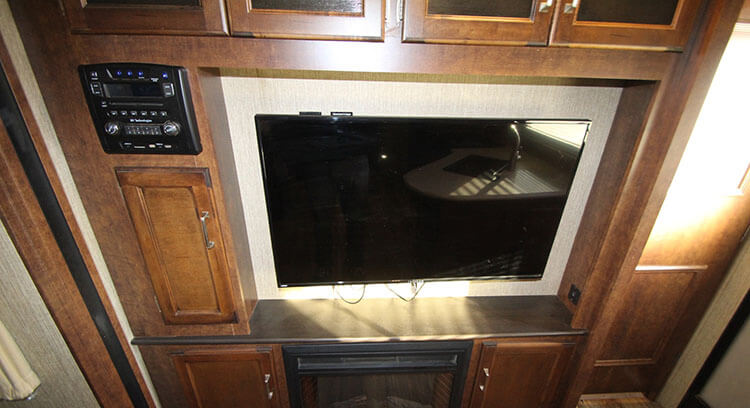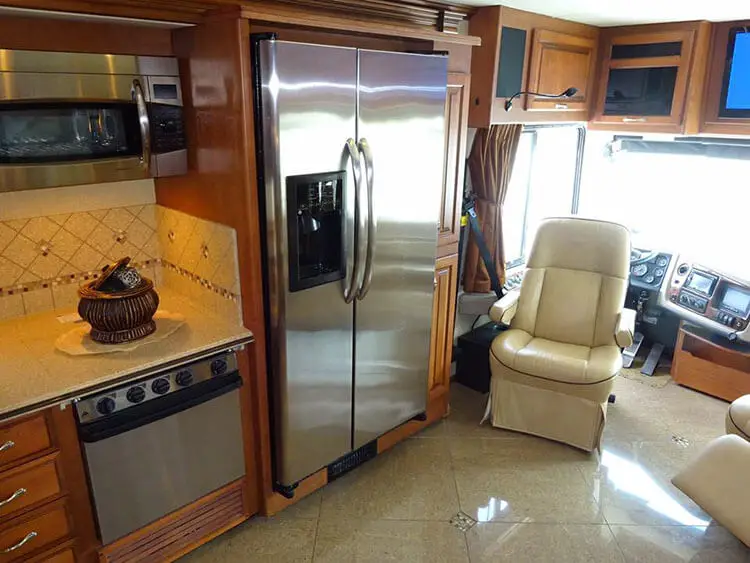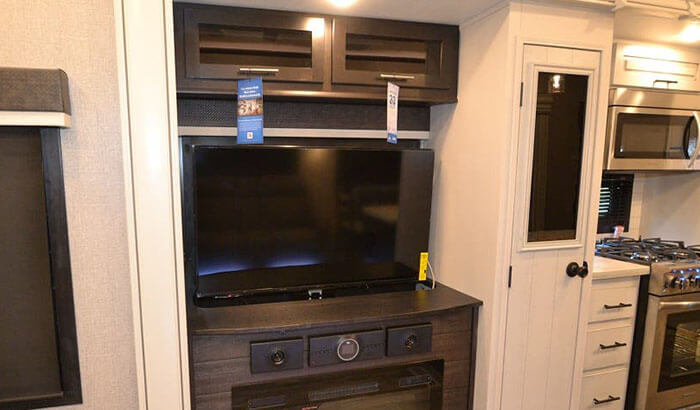RVs have come a long way in terms of creature comforts and amenities over the years. But one thing that has remained more or less the same is the RV wall’s weight capacity.
Most RVs can handle a fair amount of weight before they start to show signs of wear and tear. So, if you’re looking to add a few extra pounds to your RV, you’re in luck! Here’s everything you need to know about how much weight an RV wall can hold.
How much weight can an RV wall hold?
Most RVs are built to handle a fair amount of weight without any problems. The average RV wall can hold anywhere from 1,500 to 2,000 pounds before it starts to show signs of stress. However, there are some factors that can affect an RV wall’s weight capacity, such as the type of material it’s made out of and the age of the RV.
If you’re planning on adding a lot of weight to your RV, it’s always a good idea to check with the manufacturer to see what their recommended weight limit is. This will give you a good starting point and help you avoid any potential problems down the road.
Which materials make RV Walls more strong?

There are a few different materials that are commonly used to construct RV walls, and each one has its own advantages and disadvantages.
The most common type of material used for RV walls is aluminum, which is known for being lightweight and sturdy. Aluminum RV walls are typically very strong and can hold up to a lot of weight without any issues.
Another popular material used for RV walls is fiberglass. Fiberglass is a bit heavier than aluminum, but it’s also very strong and durable. Fiberglass RV walls can usually hold up to about the same amount of weight as aluminum walls, making them a great option for those who are looking to add a lot of extra weight to their RV.
Finally, there is plywood. Plywood is the heaviest type of material used for RV walls, but it’s also the strongest. Plywood RV walls can typically hold up to twice as much weight as aluminum or fiberglass walls, making them a great choice for those who are looking to really beef up their RV’s weight capacity.
Below is a table that outlines the average weight capacity of different RV wall materials.
| RV Material | Average Weight Capacity |
| Aluminum | 1,500 – 2,000 pounds |
| Fiberglass | 1,500 – 2,000 pounds |
| Plywood | 2,000 – 4,000 pounds |
What can I Mount on RV Wall?
RV walls are a great place to mount things like TVs, shelves, or cabinets. You can also use them to hang pictures or other decorations. Just be sure to not mount anything that’s too heavy, as this could damage the RV wall material.
Here are a few ideas of things you can mount on your RV walls:
- TVs
- Shelves
- Cabinets
- Pictures
- Decorations
- Hooks (for towels, clothes, etc.)
- Storage baskets
- Coat racks
Just use your imagination and be creative! There are tons of things you can do to personalize your RV and make it feel like home.
How do you increase RV Wall Weight Capacity: Pro tips

There are a few things you can do to reduce the amount of pressure on your RV walls.
1. One thing you can do is distribute the weight evenly throughout the RV. This will help to reduce the amount of pressure on any one particular area of the RV.
2. Another thing you can do is to use a weight distribution hitch. This type of hitch will help to distribute the weight of the RV more evenly, which will reduce the amount of pressure on the RV walls.
3. You can add extra storage space by installing shelves or cabinets. This is a great way to increase the amount of weight your RV can hold without putting too much strain on the walls.
4. Another option is to add extra insulation. This will help to keep the temperature inside your RV consistent, which can reduce the amount of stress on the walls.
5. You can also reinforce the RV walls with additional supports. This is a more involved process, but it will significantly increase the amount of weight your RV can hold.
6. Another option is to upgrade the RV’s axle capacity. This will enable your RV to hold more weight without putting too much stress on the tires or suspension.
7. You can always just buy a heavier RV. This might not be the most practical solution, but it will definitely increase the amount of weight your RV can hold!
8. Finally, you can always just add more weight to the RV itself. This is generally not recommended, as it can put a lot of strain on the RV’s frame and suspension. However, if you’re careful and don’t overload the RV, it can be done.
If you’re not sure how to go about increasing the weight capacity of your RV, there are a few different ways you can get help. One option is to contact the RV manufacturer and ask for their recommendations. Another option is to consult with an RV dealer or an RV mechanic. They will be able to help you figure out the best way to increase the weight capacity of your RV.
How to mount the TV on RV Walls: Installation tips

1. Choose the right location for your wall mount. It’s important to choose a spot that is strong enough to support the weight of your TV. Avoid places where there might be a lot of movements, such as near a door or window.
2. Use the right type of screws. Make sure to use screws that are long enough to go through the thickness of your RV’s walls. Use a drill to make pilot holes for the screws, which will make it easier to get them started.
3. Use wall anchors if necessary. If your RV’s walls are made of a material that is difficult to screw into, such as aluminum, you may need to use wall anchors. Wall anchors are available at most hardware stores.
4. Follow the instructions that come with your TV mount. Each TV mount is different, so it’s important to follow the specific instructions that come with yours.
5. Use a level to make sure your TV mount is installed correctly. Once you have the TV mount in place, use a level to make sure it is level from side to side and front to back.
6. Attach your TV to the mount. Once the mount is level, attach your TV to the mount according to the instructions that come with your TV.
7. Enjoy your new wall-mounted TV!
Frequently Asked Questions
How do I know if my RV can handle the weight of a new TV?
The best way to find out is to check with the manufacturer. They will be able to tell you the recommended weight limit for your specific RV model.
Does the age of the RV affect its weight capacity?
The age of an RV can have a significant impact on its weight capacity. Older RVs often have weaker walls that can’t hold up to as much weight as newer models. This is because the materials used to construct RV walls have gotten stronger and more durable over the years.
So, if you’re planning on adding a lot of weight to your RV, it’s always a good idea to check with the manufacturer to see what their recommended weight limit is. This will give you a good starting point and help you avoid any potential problems down the road.
Does the size of the RV affect its weight capacity?
The size of an RV has a direct impact on its weight capacity. Larger RVs can typically hold more weight than smaller ones. This is because they have more space for additional support and reinforcement.
So, if you’re planning on adding a lot of weight to your RV, it’s always a good idea to choose a model that is large enough to accommodate your needs.
In Conclusion:
RVs are designed to be lightweight and easy to tow. However, they still have a weight limit that must not be exceeded. If you’re planning on adding any additional weight to your RV, it’s important to check with the manufacturer first to make sure that your RV can handle the extra weight.

Hi I’m Joiel Borid Creators of RV Outsider. Wild Life’s first camping was started when I’m 8 years old, at the Home Front Yard. Moto of RV Outsider shares my experience, expertise, and knowledge that I learned, and apprises about my next journey. So stay tuned with RV Outsider.
